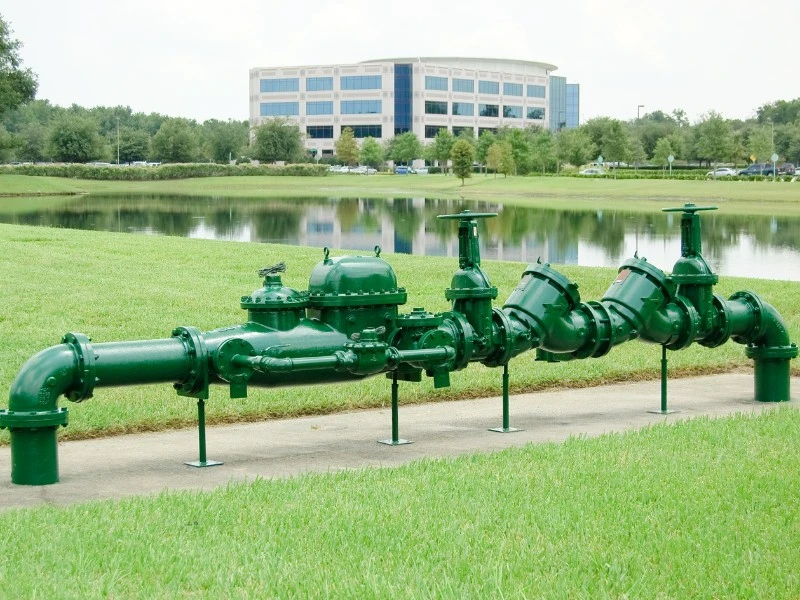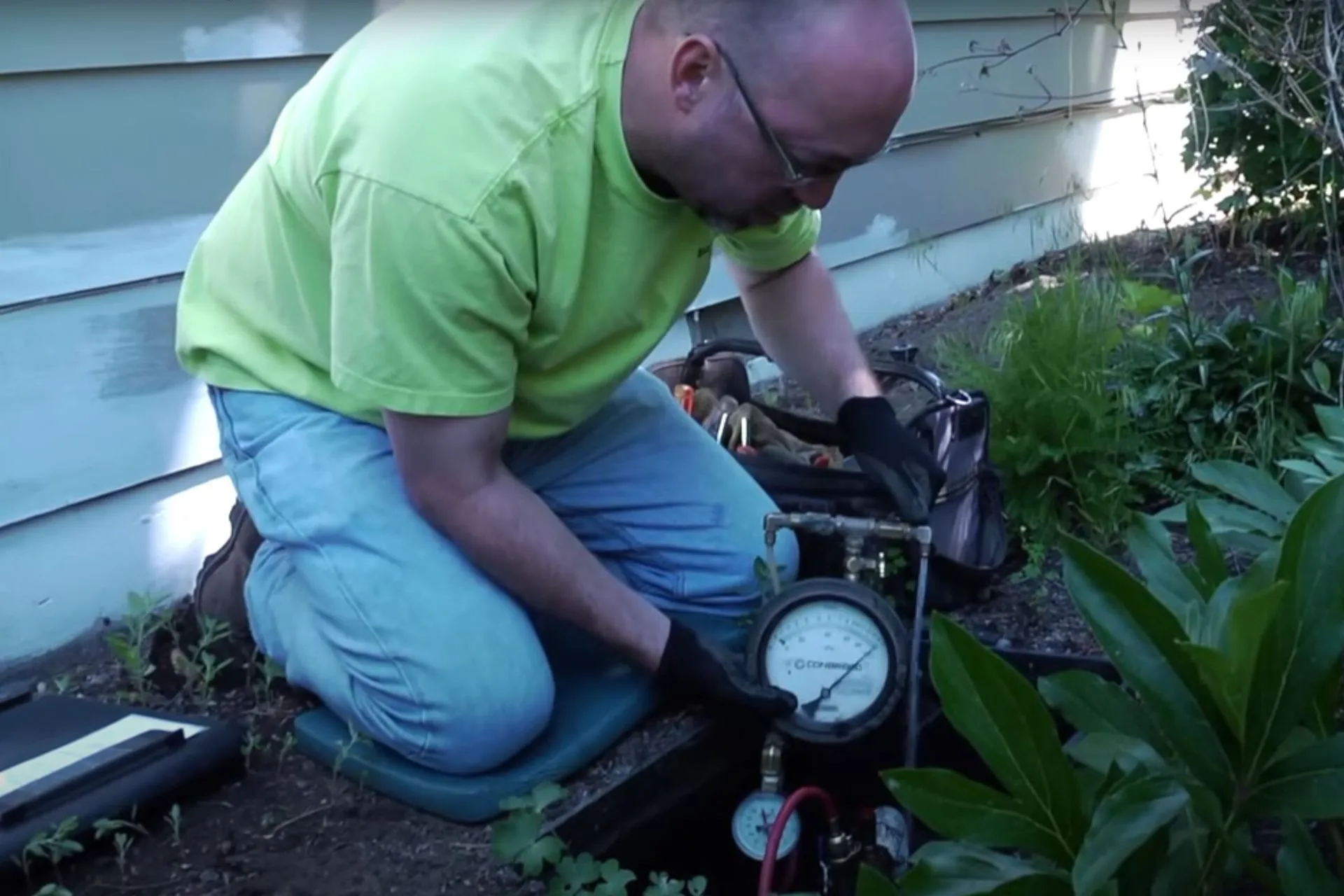[ad_1]
What Is Backflow Testing?
Backflow testing is an essential process that helps ensure the safety and quality of our drinking water.
By understanding the basics of backflow, the importance of backflow testing, the testing process itself, and how to interpret test results, we can better appreciate the significance of this procedure in maintaining a healthy water supply.
? Understanding the Basics of Backflow

What is Backflow?
Backflow refers to the unwanted reversal of water flow in a plumbing system.
It occurs when water flows backward, going against its intended direction, creating a potential contamination hazard.
This reversal can cause pollutants and contaminants to enter our clean water supply, compromising its safety and quality.
To fully grasp the concept of backflow, it is important to understand the causes behind it.
Backflow can happen due to various reasons, such as changes in water pressure or temperature.
Common causes include cross-connections, which are points in the plumbing system where potable water mixes with non-potable water sources.
These cross-connections can occur in various settings, such as residential, commercial, or industrial buildings.
One example of a cross-connection is a garden hose left submerged in a swimming pool.
If the water pressure in the pool drops suddenly, it can create a vacuum effect, pulling the pool water back into the plumbing system and contaminating the potable water supply.
Similarly, a garden hose connected to a pesticide sprayer can pose a risk if the pressure in the water supply decreases, causing the pesticide to flow back into the plumbing system.
Another common cause of backflow is back siphonage, which occurs when a sudden drop in water pressure pulls contaminants back into the water system.
This can happen when there is a break in the water main, a nearby fire hydrant is opened, or during firefighting operations.
In these situations, the drop in pressure can cause a reversal of water flow, drawing contaminants from nearby sources, such as irrigation systems, chemical storage tanks, or even sewage systems.
Understanding the causes of backflow is crucial in preventing its occurrence.
By identifying potential cross-connections and implementing backflow prevention devices, such as backflow preventer valves also sometimes called a backflow prevention assembly, the risk of contamination can be significantly reduced.
These devices are specifically designed to prevent the backward flow of water, ensuring that our clean water supply remains safe and free from pollutants.
Furthermore, regular maintenance and testing of backflow prevention assemblies are essential to ensure their proper functioning.
Backflow prevention programs, implemented by water utilities and regulatory agencies, help to monitor and enforce the use of a backflow device.
By conducting inspections and tests, any potential issues or malfunctions can be identified and addressed promptly, preventing backflow incidents and safeguarding our water supply.
Backflow is a significant concern that can compromise the safety and quality of our water supply.
By understanding the causes behind backflow and implementing preventive measures, such as backflow prevention devices and regular maintenance, we can protect our potable water from contamination and ensure its continued safety for consumption and use.
? The Importance of Backflow Testing

Backflow prevention testing plays a crucial role in ensuring the safety and quality of our drinking water.
By regularly conducting testing, we can protect the public water supply from potential contaminants, safeguarding the health of individuals and communities.
✅ Protecting Water Quality
One of the primary reasons for performing backflow prevention testing is to protect the quality of our drinking water.
Regular testing helps prevent contaminants from entering the public water supply, ensuring that we have access to clean and safe water for our daily needs.
Water is a vital resource that we rely on for various purposes, such as drinking, cooking, and hygiene.
Without proper testing, there is a risk of pollutants infiltrating the supply, compromising its quality.
These pollutants can include chemicals, bacteria, and other harmful substances that pose a threat to human health.
By conducting testing, water authorities can identify any potential backflow incidents and take immediate action to rectify the situation.
This proactive approach helps maintain the integrity of the water supply, reducing the chances of contamination and ensuring that the water we consume is of the highest quality.
✅ Preventing Health Risks
Backflow can introduce various harmful substances into the water supply, including chemicals, bacteria, and other pollutants.
These contaminants can pose significant health risks if consumed or used for cooking, cleaning, or bathing.
By conducting testing, we can identify and address potential issues promptly, minimizing the risk to public health.
When backflow occurs, it can lead to the reversal of water flow, causing contaminated water to mix with the clean water supply.
This contamination can result from various sources, such as cross-connections between drinking water and irrigation systems or improper plumbing installations.
Chemicals and pollutants present in contaminated water can have detrimental effects on human health.
For example, certain chemicals may cause gastrointestinal issues, while bacteria and other microorganisms can lead to infections and diseases.
By regularly testing for backflow, we can detect and prevent these health risks, ensuring that the water we use is safe for consumption and other daily activities.
Furthermore, backflow incidents can be particularly dangerous for vulnerable populations, such as children, the elderly, and individuals with weakened immune systems.
These groups are more susceptible to the adverse effects of contaminated water, making backflow testing even more crucial in protecting their well-being.
Backflow testing is essential for maintaining the safety and quality of our drinking water.
By preventing contaminants from entering the water supply and addressing potential health risks promptly, we can ensure that everyone has access to clean and safe water for their daily needs.
Regular testing is a vital component of water management and plays a crucial role in safeguarding public health.
? The Backflow Testing Process

? Equipment Used in Backflow Testing
Qualified professionals such as a certified backflow tester use specialized equipment to conduct testing.
This equipment includes gauge assemblies, test kits, and backflow preventer valves.
Gauges measure water pressure, while test kits check for the presence of contaminants and assess the functionality of a backflow preventer device.
? Steps in Conducting a Backflow Test
The backflow testing process typically involves several steps.
First, the certified testers isolate the backflow preventer valve to prevent water from flowing backward during the test.
They then use the necessary equipment to measure water pressure and perform visual inspections.
Once the testing is complete, the technician records the readings and determines if any further actions are required.
? Interpreting Backflow Test Results
?️ Understanding Test Reports
Backflow test readings provide valuable information about the functionality of the plumbing system and the presence of potential contamination sources.
The technician interprets the results based on the established standards and guidelines.
Readings within the acceptable range indicate properly functioning backflow preventers, while abnormal readings may indicate issues that need attention.
?️ Identifying Potential Problems
Backflow test results can help identify potential problems within the plumbing system and pinpoint areas that require further investigation or maintenance.
These results can reveal issues such as worn-out gaskets, valve malfunctions, or cross-connections that may need immediate attention to prevent backflow and protect the water supply.
? When and How Often to Test for Backflow
⏰ Recommended Testing Frequency
The frequency of testing depends on various factors, including local regulations, the building’s usage, and the type of backflow preventer valve installed.
In general, annual testing is recommended to ensure ongoing protection of the water supply.
However, some situations may require more frequent testing, such as high-risk locations or specific industry requirements.
⏰ Signs You Need Immediate Testing
While backflow prevention devices must be tested annually, certain signs may indicate the need for immediate testing.
These signs include a visible drop in water pressure, discolored water, or a noticeable change in water taste or odor.
If you notice any of these signs or suspect a potential backflow issue, it is crucial to have the system tested promptly to prevent potential health risks.
Final Thoughts

By understanding what backflow testing entails and why it is crucial, we can actively contribute to preserving the safety and quality of our water service.
Regular testing, coupled with proper maintenance and swift action when necessary, helps ensure that we can enjoy clean and healthy water for years to come.
Have plumbing questions that aren’t about backflow testing? We’ve got the answers. Check out our other plumbing articles.
Related Reading: DIY Guide to 15 Common Plumbing Problems & Solutions
[ad_2]
Source_link


